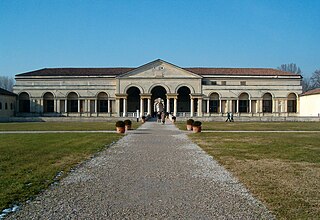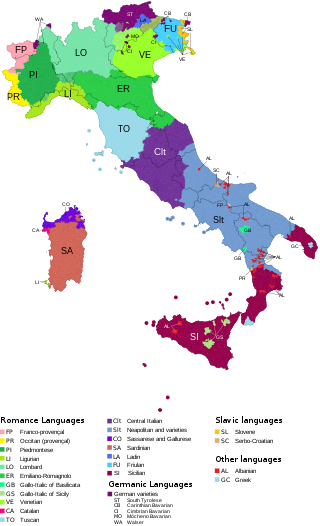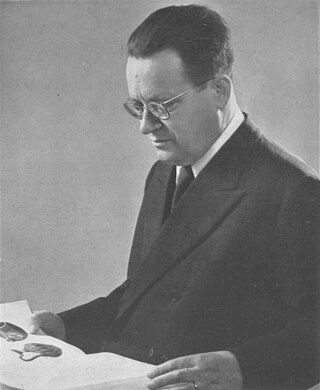
Italian is a Romance language of the Indo-European language family that evolved from the Colloquial Latin of the Roman Empire. Italian is the least divergent language from Latin, together with Sardinian. Spoken by about 85 million people, including 67 million native speakers (2024), Italian statistically ranks 21st as the most spoken language in the world, but depending on the year it ranks fourth or fifth as the most studied cultural language, especially in higher cultural institutes, academies, and universities.

Campidanese Sardinian also known as Southern Sardinian is one of the two written standards of the Sardinian language, which is often considered one of the most, if not the most conservative of all the Romance languages. The orthography is based on the spoken dialects of central southern Sardinia, identified by certain attributes which are not found, or found to a lesser degree, among the Sardinian dialects centered on the other written form, Logudorese. Its ISO 639-3 code is sro.

Neapolitan is a Romance language of the Italo-Romance group spoken in Naples and most of continental Southern Italy. It is named after the Kingdom of Naples, which once covered most of the area, and the city of Naples was its capital. On 14 October 2008, a law by the Region of Campania stated that Neapolitan was to be protected.

Palazzo del Te, or simply Palazzo Te, is a palace in the suburbs of Mantua, Italy. It is an example of the mannerist style of architecture, and the acknowledged masterpiece of Giulio Romano.
Regional Italian is any regional variety of the Italian language.

The languages of Italy include Italian, which serves as the country's national language, in its standard and regional forms, as well as numerous local and regional languages, most of which, like Italian, belong to the broader Romance group. The majority of languages often labeled as regional are distributed in a continuum across the regions' administrative boundaries, with speakers from one locale within a single region being typically aware of the features distinguishing their own variety from others spoken nearby.

The Veronese Riddle is a riddle written in either Medieval Latin or early Romance on the Verona Orational, probably in the 8th or early 9th century, by a Christian monk from Verona, in northern Italy. It is an example of a writing-riddle, a popular genre in the Middle Ages and still in circulation in recent times. Discovered by Luigi Schiaparelli in 1924, it may be the earliest extant example of Romance writing in Italy.
Trecase is a comune (municipality) in the Metropolitan City of Naples in the Italian region of Campania, located about 15 kilometres (9.3 mi) southeast of Naples.

Italian profanity are profanities that are blasphemous or inflammatory in the Italian language.
A name in the Italian language consists of a given name and a surname ; in most contexts, the given name is written before the surname, although in official documents, the surname may be written before the given name or names.
Vito Pallavicini was an Italian lyricist.
Emilian is a Gallo-Italic unstandardised language spoken in the historical region of Emilia, which is now in the western part of Emilia-Romagna, Northern Italy.
Maria Carmela D'Urso, known professionally as Barbara D'Urso, is an Italian television presenter, actress and writer.

Racism in Italy refers to the existence of antagonistic relationships between Italians and other populations of different ethnicities which has existed throughout the country's history.

Bruno Migliorini was an Italian linguist and philologist. He was the author of one of the first scientific histories of Italian language and was president of the Accademia della Crusca.

Polentone is an epithet of the Italian language originally coined with a joking connotation to indicate a great polenta eater and, subsequently, used by the inhabitants of Southern Italy to indicate the inhabitants of Northern Italy in a depreciative sense.
Aldo Duro was a Dalmatian Italian linguist and lexicographer. He worked for both the Accademia della Crusca and the Enciclopedia Italiana, of which he was director of the lexicography. Duro was also the director of the Italian Vocabulary.

The Southern Latian dialect is a Southern Italian dialect widespread in the southernmost areas of Lazio, in particular south of the city of Frosinone and starting from the cities of Formia and Gaeta along the coast.

The Arianese dialect, typical of the territorial area of Ariano Irpino, is a vernacular variety of the Irpinian dialect, belonging in turn to the Neapolitan group of southern Italian dialects. Like all Romance languages, it descends directly from Vulgar Latin, a language of Indo-European stock that has been widespread in the area since Roman times.

Il mammone is a 2022 Italian comedy film directed by Giovanni Bognetti.
















